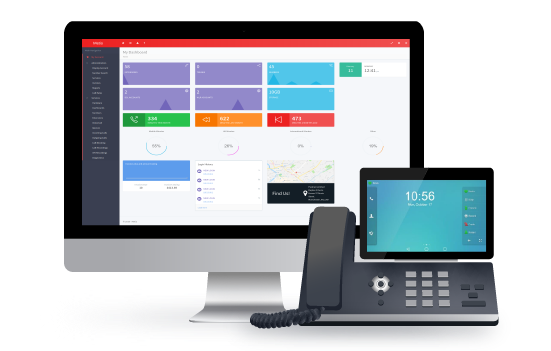
When compared to “traditional” analogue telephone calls made via a standard circuit copper wired telephone, the quality should be the same if not better.
What’s the difference then?
When you initiate a call to an analogue landline from your VoIP phone, your voice is being converted into digital data packets as you talk into the receiver. Using the internet, the digital packets are then passed onto the PSTN (Public Switch Telephone Network) and onwards to the call recipient.
What converts voice from analogue to digital?
This is handled by voice codecs. There are many variations of codecs and they in turn vary in the quality of voice that is experienced by the user. Traditional telephony over a copper wire is comparable to voice codec G711 @ 64kbps. This codec is the main ones used by ITSP’s and used when passing calls to PSTN and mobile carriers.
What is HD Voice?
HD Voice is a term that has come into the industry and can be seen on the packaging of most IP phones.
What does it really mean?
Again, it’s down to the codec. HD voice uses a wideband codec and the most common ones are G722, SILK, AMR-WB which are classified as wideband codecs. Wideband means a wider spectrum of sounds, thus creating a fuller and higher quality sound stream.
What if I’m calling somebody without HD Voice?
Yes, the call will proceed as normal. That said, if the two parties in the call are using different codecs, then a task called transcoding (the process of converting a voice signal delivered in one codec, to a secondary codec) has to happen to manage the call.
What happens if the ITSP and the carriers use different codecs?
If the user and the ITSP are using one codec and the PSTN carrier or mobile carrier are using a different codec then again transcoding will happen to manage the various legs of the call. HD voice will only truly happen if all parties are on the same codecs of on variations of HD codecs.
Doesn’t this sound like a bit of a gimmick?
Well, yes and no. If all parties support it, then the call quality is much clearer, but if not, then the standard common codec, which in almost all cases is lower quality than HD voice, will be used. Always ask you ITSP what codecs they will provide. The standard codecs are G711, G729, G722 and where you can try and use G711 as a minimum.
What usage impacts do the codecs have on my internet connectivity?
Each codec uses a different amount of bandwidth. The most efficient is G729, followed by G711 and then G722 and the other wideband codecs.
Each codec is listed at G729 (8 kbps), G 711 (64kbps) and G722 (48, 56 & 64 kbps) with network overhead for UDP and ethernet the real rates per call are approx. G729 (26kbps), G711 (82 kbps) & G722 etc. (50-80 kbps).
The mobile carriers in their push for higher voice quality using less bandwidth are pushing the AMR-WB codec which whilst is a wideband codec uses a bandwidth base rate of 22kbps and gives an audio sampling rate double that of G711 at 16 kHz.
In short, the higher the codec quality and the more users you have, the more bandwidth you will need to support your calls. Always ensure you capacity plan before moving to VoIP.


